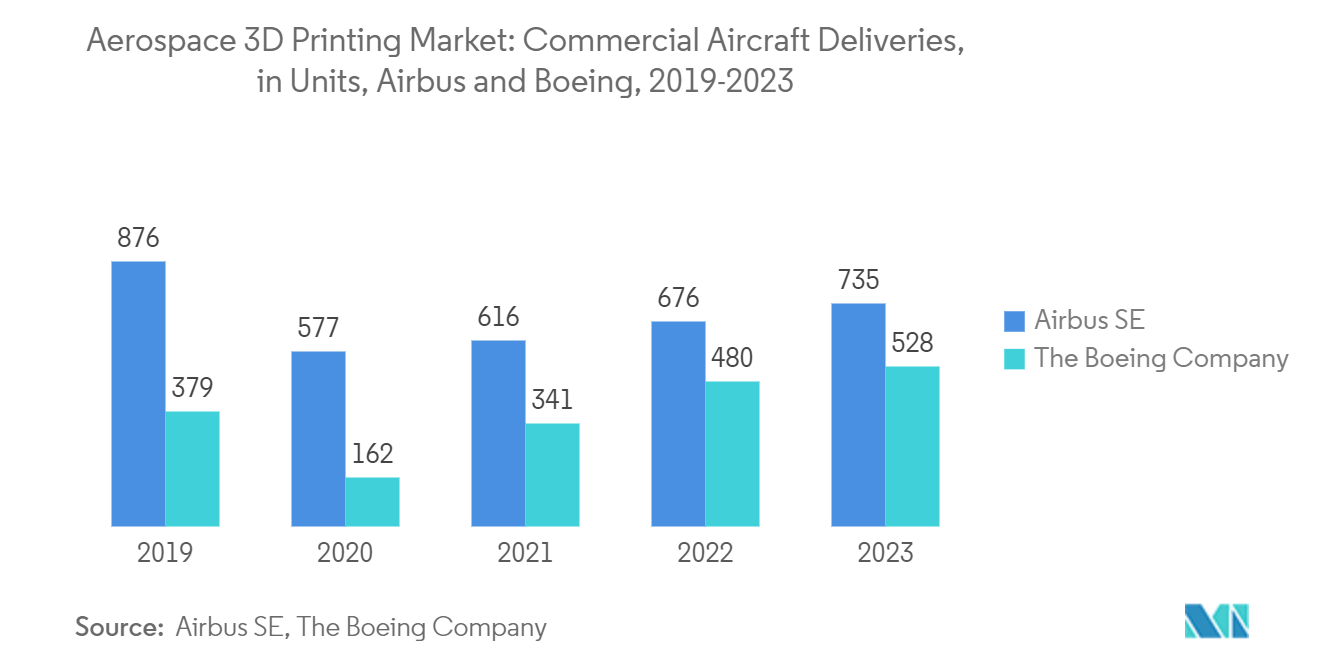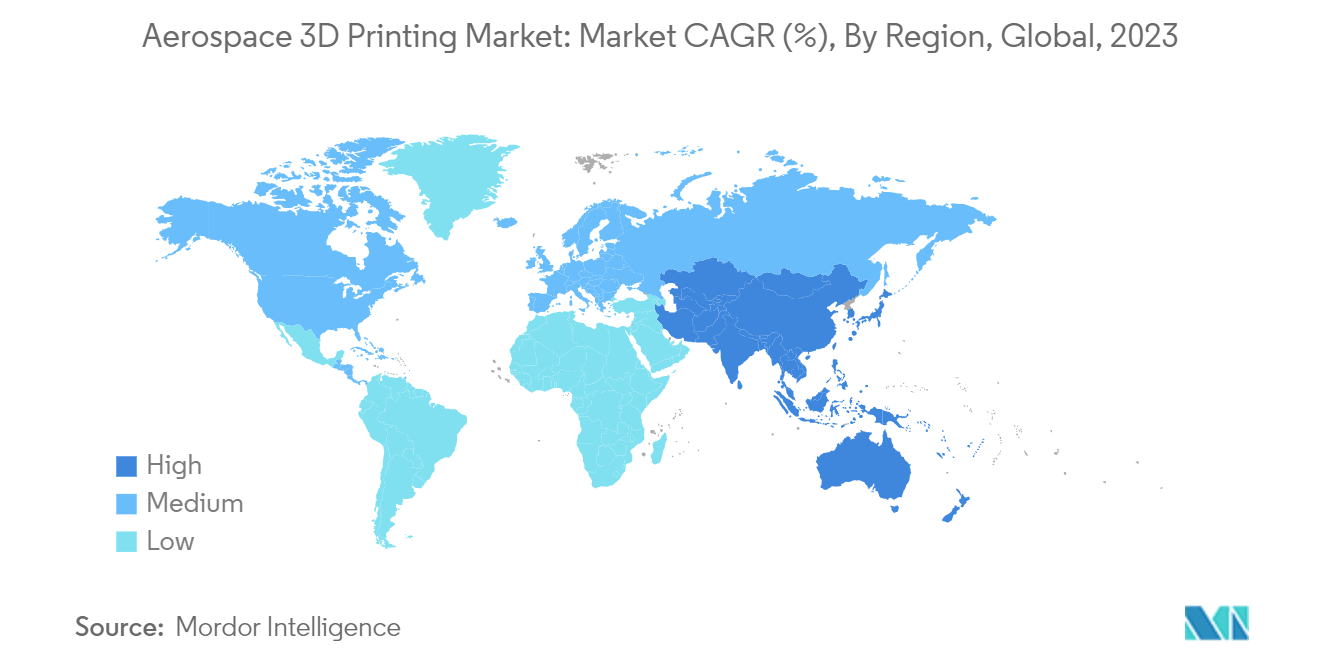Market Trends of 3D Printing In Aerospace And Defense Industry
The Aircraft Segment is Projected to Witness Highest Growth During the Forecast Period
The aircraft segment will showcase remarkable growth during the forecast period. This surge owes to the additive manufacturing process's high potential for weight reduction. The capability for complex geometries and optimization of part designs further results in weight saving, improving general aircraft performance and sustainability. In addition, reducing the number of assemblies to single, integrated parts diminishes assembly costs and increases structural integrity. The economic advantage is especially useful in producing special mission aircraft and helicopters, which tend to have many specially designed parts to meet unique operational demands.
3D printing has revolutionized the aircraft manufacturing industry, and there is a massive expansion in the number of use cases where additive manufacturing can replace conventional methods of manufacturing commercial and military aircraft parts at lower costs, faster lead times, and more digitally flexible design and development methods. The B777X aircraft is a prominent example of the application of additive manufacturing, as its GE9X engines are made of 300 3D-printed parts, including fuel nozzles, temperature sensors, heat exchanges, and low-pressure turbine blades.
Aircraft OEMs and 3D printing firms are collaborating to significantly reduce inventory costs and storage requirements instead of maintaining large stocks of spare parts. Manufacturers can produce them as needed, reducing lead times and supply chain complexities. Material innovation is also critical for expanding 3D printing applications in aerospace. High-performance metals and composites developed to meet stringent aerospace standards for strength, durability, and heat resistance are expanding additive manufacturing's scope. Such collaborative efforts as the Airbus and Safran partnership and the development of the LEAP engine from GE Aviation prove the technology has a place.
Other notable contract awards, such as Lockheed Martin's engagement with the Department of Defense, confirm the strategic relevance and even radical potential of 3D printing in transforming aircraft design, production, and maintenance. For instance, in October 2023, The Boeing Company and ASTRO America are preparing to test a 3D-printed main rotor system for the AH-64 Apache attack helicopter next spring. Using the world's largest 3D metal printer, the new rotor link assembly cuts traditional lead times from one year to just eight hours, streamlining supply chain efficiency.

Asia-Pacific is Expected to Grow with the Highest CAGR During the Forecast Period
During the forecast period, Asia-Pacific is anticipated to show remarkable growth in the aerospace 3D printing market. This projection is driven by the growing aerospace industry within the region, which is undergirded by significant investments in advanced manufacturing technologies. Other countries, including China, Japan, and India, are among those leading this by heavy investment in aerospace innovation and infrastructure. These technologies are essential to producing many new aircraft to accommodate the demand and support the expanding commercial aviation markets.
Under the country's Made in China 2025 master plan, the Chinese government has earmarked the development of aerospace equipment and 3D printing as key growth drivers of Chinese manufacturing industries. A Chinese manufacturer developed the C919 narrow-body aircraft using 3D printed titanium parts, 28 cabin door parts, and two fan inlet structural parts to reduce the airliner's weight and increase its safety. Also, China's aviation industry has started using 3D printing technologies on new-generation warplanes, with 3D printed parts widely used on newly developed aircraft. 3D printing technologies have been implemented in the major aircraft manufacturing factories of the Chinese aviation industry.
3D printed parts provide numerous advantages, such as high structural strength and long service life, as well as being lightweight, low cost, and quicker to manufacture. In February 2024, China launched the SmartSat-2A satellite, featuring critical parts 3D printed by BLT using AlSi10Mg alloy. China's most significant 3D-printed space component is in its structure, using the BLT-S1000 large-format twelve-laser systems that help enhance Earth observation capability with advanced radar technology.
Also, India is gradually growing in its utilization of 3D printing technology, with startups in cities like Bangalore, Chennai, Mumbai, and Visakhapatnam producing essential parts for the aerospace and defense sector. The clientele includes the Indian Navy, Air Force, Indian Space Research Organization (ISRO), and Hindustan Aeronautics Limited (HAL). Thus, the growing adoption of 3D printing in aerospace and defense boosts the market growth across the region.


